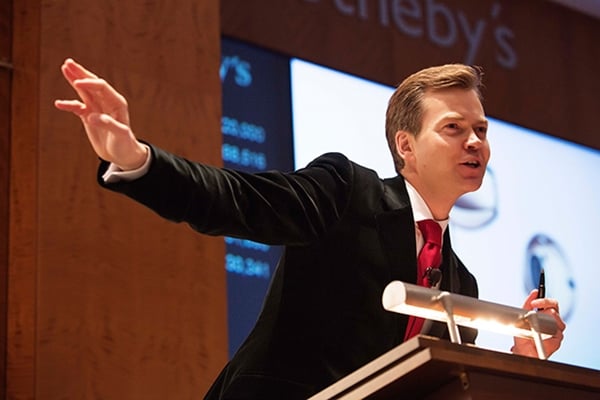
Alberto Giacometti’s Chariot, which was conceived in 1950 and cast in 1951–2, was guaranteed by Sotheby’s at its past May sale. It sold near the low estimate for a price of $101 million.
Photo: Courtesy Sotheby’s.
In a thoughtful, well-reported piece in The New York Times, Graham Bowley explores Christie’s and Sotheby’s return–apparently with full force–to making auction guarantees for expensive lots. Both houses all but abandoned guarantees in the wake of the fallout from the global economic crisis that hit the art market in 2008. As Bowley reports, Sotheby’s lost about $52 million in one season alone, though the level of Christie’s exact losses is harder to come by, as they are not publicly traded and therefore not required to release detailed financial reports.
Of the fact that guarantees have now come “roaring back,” the report states:
“Perhaps it’s a mark of confidence in the art market. Or a sign that profit margins are thin. Or simply another big gamble, like the ones taken in 2008.”
Bowley also explores the risks both to the auction houses’ bottom lines, as well as to market transparency: “Despite the headlines about soaring prices, the analysts say profit margins for the auction houses on big-ticket lots are razor-thin, creating financial pressure that they suggest may have helped prompt Mr. Ruprecht of Sotheby’s, and Steven P. Murphy, his counterpart at Christie’s, to announce recently that they were stepping down.”
Having abandoned the guarantee model as a way of attracting business following 2008, both houses relied heavily on “third-party guarantees,” where an outside financier would assume risk in exchange for sharing in any potential upside on a particular work. But amid increased confidence in the market—as well as pressure to maximize profits—the key difference now is that the houses have resumed direct guarantees. Both methods have drawn criticism.
“[T]heir use comes with some longstanding complaints that they can tilt what auctions have long claimed to be —level playing fields. Critics say, for example, that an auction house may promote a guaranteed artwork more than one in which it has no stake.”